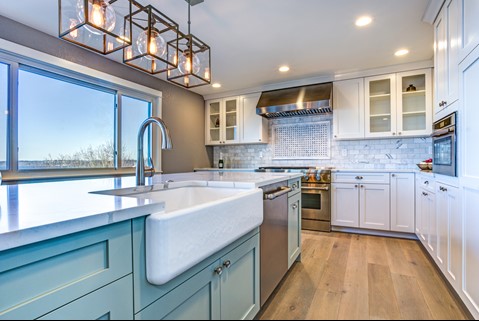
Controlling Indoor Humidity: Why and How
Sponsored Content by National Strategic Partner, Pillar To Post
 High humidity in the home can cause more than discomfort. Excessive moisture can cause mold and mildew growth, and when combined with warm temperatures can also allow dust mites to thrive. The causes of high relative humidity (RH) levels are varied. Showers, clothes dryers, steam from cooking, and splashing from tubs and sinks are common causes of increased humidity. Plumbing leaks, poor ventilation and other structural and systemic issues are also likely culprits. If not addressed, excessive moisture can lead to odors, wood rot, damage to painted surfaces and even structural damage.
High humidity in the home can cause more than discomfort. Excessive moisture can cause mold and mildew growth, and when combined with warm temperatures can also allow dust mites to thrive. The causes of high relative humidity (RH) levels are varied. Showers, clothes dryers, steam from cooking, and splashing from tubs and sinks are common causes of increased humidity. Plumbing leaks, poor ventilation and other structural and systemic issues are also likely culprits. If not addressed, excessive moisture can lead to odors, wood rot, damage to painted surfaces and even structural damage.
The first step in determining if a home has elevated RH is to measure it using a hygrometer, which is readily available in hardware stores. According to the U.S. Environmental Protection Agency, keeping indoor humidity below 50% is best for warmer months, while levels as low as 30% are acceptable during colder weather. Take measurements in various parts of the home to determine if high RH is localized to certain rooms or areas such as the basement or attic, or if the levels are elevated throughout the home.
Using exhaust fans to ventilate bathrooms, laundry rooms, and kitchens is a very effective way to reduce RH. Exhaust fans should be used regularly and must be installed so that they vent to the outdoors. Another benefit is that odors and pollutants will be removed along with the moisture. Exhaust fans should always be used especially after showering to not only rid the room of moisture-laden air, but to help limit condensation on walls, ceilings, and other surfaces. Many newer exhaust fans are both extremely quiet and efficient.
Portable dehumidifiers are effective in locally damp spaces such as basements. Dehumidifiers work best at minimum temperatures of 65°F/18°C. If the space is cooler than this, the unit may ice up; some models have an automatic shutoff function for this. The manufacturer will indicate the square footage appropriate for various models. It’s important to note that a unit with insufficient capacity for a particular space will not effectively reduce humidity to desired levels and wastes energy, too.
Find and fix any local sources of excessive moisture such as a leak in a basement or crawlspace wall. When the source of moisture is eliminated, RH in that area should fall. Be sure that clothes dryers vent to the outside, and check the hose leading from the dryer to the exterior vent to make sure it is clear of lint and other debris.
Controlling household humidity can add to the comfort, enjoyment, and well-being of both the people who live there and the home itself.


